#nummulite
Explore tagged Tumblr posts
Text

An Egyptian Nummulitic Limestone Figure of an Amarna Princess,
New Kingdom, 18TH Dynasty, Reign of Akhenaten, Circa 1347-1345 B.C.
13 ½ in. (34.3 cm.) high.
Courtesy: Christie's
#art#history#design#style#archeology#sculpture#antiquity#christie's#figure#egypt#nummulitic#amarna#princess#new kingdom#18th dynasty#akhenaten#ancient egypt
143 notes
·
View notes
Text
Nummulietenkalk

Wanneer je vanaf San Pere Pescador de N13 volgt richting St. Martin d’ Empuries, het eerstvolgende gehucht zuidwaarts, dan zie je vlak voordat je het bereikt aan je linkerhand iets dat lijkt op een steengroeve. Althans als je er oog voor hebt; mij viel het gelijk op.
Ik weet niet of we het mogen scharen onder het Pavlov-effect, maar zodra ik iets zie dat op een steengroeve lijkt, begint het bij mij te kriebelen. Dan moet ik er heen. Gewoon een beetje kijken. Vaak levert zo’n bezoek interessante informatie op over de geologie van de omgeving en met een beetje mazzel een paar leuke vondsten.
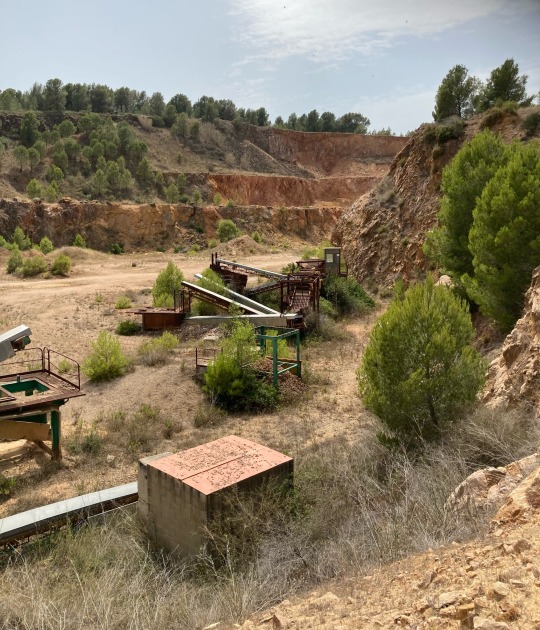
De Groeve tussen Viladalmat en Albons
Het bleek inderdaad een groeve. Of beter gezegd. Het waren er twee. Een waar nog actief wordt gegraven en een verlaten. De actieve groeve was gesloten voor onbevoegden, de verlaten niet. Daar kon je tot op zekere hoogte en diepte een bezoek aan brengen. Direct boven en onder de kliffen was het, waarschijnlijk vanuit veiligheidsoverwegingen, afgesloten verder kon je gaan en staan waar je wilde. En omdat het kon deed ik dat. Hetgeen behalve een fantastische uitzicht ook de nodige informatie opleverde over de ouderdom van het gesteente aldaar. Ik trof namelijk gesteente met nummulieten erin.
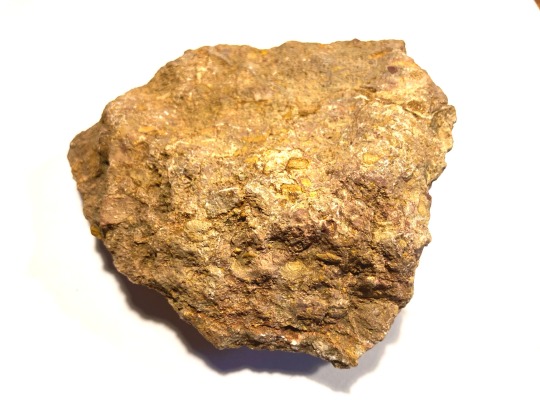
Stuk nummulietenkalk gevonden in de groeve.
Nummulieten
De eerste nummulieten (ik schreef er al eens over) dateren uit het Laat-Paleoceen zo’n 58 miljoen jaar geleden, maar vooral tijdens het Eoceen zijn de nummulieten een groot succes. Tegen het eind van het Vroeg-Oligoceen, sterven ze uit. Wat nu nog rest zijn de ontelbare skeletjes. Skeletjes die uitstekend gebruikt kunnen worden als gidsfossiel voor het Paleogeen. Door ze te bestuderen kun je dus behoorlijk precies bepalen hoe oud gesteente is. Althans als je ze tot op soort weet te determineren. Hetgeen een specialistenwerk is. Omdat ik geen specialist ben, kan ik het alleen globaal. Het betreffende gesteente is tussen de 60 en 28 miljoen jaar oud.
In de branding
Omdat het gesteente in de groeve eerder interessante dan mooie was en omdat alles op de rug gedragen diende te worden, nam ik slechts een exemplaar mee voor de verzameling. En dat was maar goed ook. Een dag later bleek namelijk dat je bij het strand van St. Marti met gemak veel mooiere exemplaren kon vinden. In de branding lagen ze voor het oprapen. Netjes gerold en wel. Al snorkelend pikte ik de mooiste eruit.

Kiezels van nummulietenkalk gevonden in zee.
Uiteenlopende kleuren en vormen
Op de zeebodem tussen de pier van St. Martin d’ Empuries en de restanten van de oude Griekse haven vond ik op de bodem stenen die qua kleur en samenstelling overeen kwamen met de steen die ik in de groeve vond. Precies de zelfde oker en bruin tinten en precies dezelfde nummulieten, maar met dien verschillen dat de stenen uit de branding prachtig gerold waren. Onderwater leek het wel edelgesteente. Maar dat was niet alles. Ik vond namelijk ook anderskleurige stenen met nummulieten erin. Grijze, bruine, rode en in die stenen trof ik nummulieten van verschillende grote en dikte. Terwijl ik ze verzamelde ontsproot mij het idee er cabochons van te maken. Met dat idee in het achterhoofd zocht ik nog wat geschikte modellen.
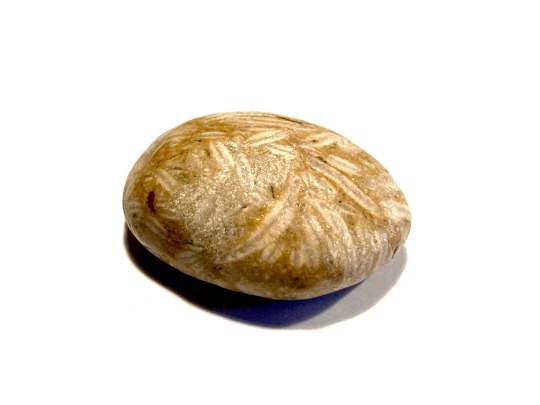


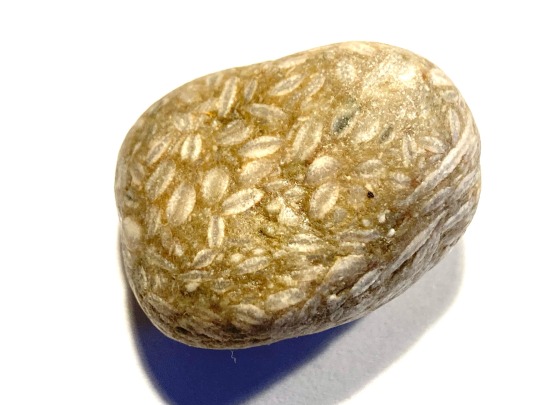
Verschillende soorten nummulieten. De platte soorten zijn uit ondiep water de bolle meer uit de diepte.
Droog
Eenmaal droog verloren de stenen door de ontelbare minuscule krasjes en oneffenheden op het oppervlak hun glans en veranderde de stenen in een doffe hoop kiezels. En dat is op zich niet erg, ik zou ze in een pot met water kunnen bewaren, probleem opgelost, maar voor een cabochon is dat wel onhandig. Ik moet ze, of in ieder geval een aantal, dus zien te polijsten. Hoe, dat moet ik alleen nog even uitzoeken.
Bronnen en verder lezen
https://www.nemokennislink.nl/publicaties/nummulieten-geen-versteend-geld-maar-reusachtige-eencelligen/
8 notes
·
View notes
Photo

Nummulitic Limestone Fossil – Eocene Foraminifera, Clues de Barles France, Authentic Specimen
An exceptional piece of Nummulitic Limestone containing abundant fossil foraminifera from the Eocene Epoch (~40–50 million years ago). This specimen originates from the fossil-rich locality of Clues de Barles in the Haute-Provence region of southeastern France.
The dominant fossils in this rock are Nummulites, large, disc-shaped benthic foraminifera that thrived in warm, shallow marine environments. These organisms were important contributors to carbonate sedimentation in the Eocene and played a significant role in reef and platform development.
Fossil Type: Foraminifera (Marine Microfossils)
Primary Genus: Nummulites
Geological Age: Eocene – Lutetian to Bartonian Stages
Formation: Nummulitic Limestone Beds (Alpine foreland basin sediments)
Depositional Environment: Formed in warm, shallow marine carbonate platform settings. Rich in calcareous micro- and macrofossils, this environment supported diverse benthic communities and accumulated thick deposits of bioclastic limestone.
Morphological Features:
Disc-like, coin-shaped foraminiferal tests (shells)
Radial and concentric internal chamber structure
Dense fossil concentration in fine-grained matrix
Notable:
Classic and scientifically significant fossiliferous limestone
Sourced from a world-famous geological and fossil site in southern France
Excellent educational, display, or geological reference piece
The exact specimen photographed is the one you will receive
Authenticity: All of our fossils are 100% genuine natural specimens and come with a Certificate of Authenticity. Please refer to the photo and scale cube (1cm squares) for accurate sizing.
This slab of Nummulitic Limestone from Clues de Barles offers a stunning glimpse into Eocene marine life and the geological processes of carbonate formation. A classic fossil collectible with both scientific and visual appeal.
#Nummulites fossil#foraminifera limestone#Eocene fossil France#Clues de Barles fossil#fossil limestone#nummulitic rock#fossil marine microfauna#French fossil stone#foraminiferal fossil#fossil collector slab#fossil limestone France#authentic fossil specimen
0 notes
Text
#2660 - Olearia nummulariifolia
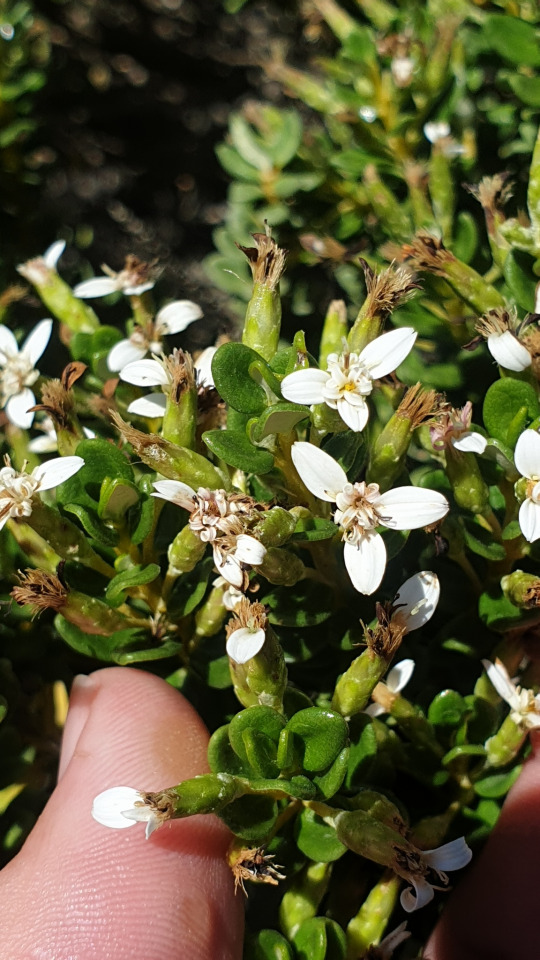

AKA Eurybia nummulariifolia, and Olearia hillii. The second part of the binomial means 'coin-leaved'.
(See also the frequently fossilised foraminiferan Nummulites. The Ancient Egyptians used the fossils as coins, and the Pyramids were built from nummulitic limestone. In 1913, naturalist Randolph Kirkpatrick published a book, The Nummulosphere, claiming that ALL rocks were accumulations of fossil forams like Nummulites.)
A shrub on the highest point of the Tasman moraine, with a few icebergs floating in the meltwater lake behind it.
Found in the higher parts of the North Island, but more widely distributed on the South.
Aoraki / Mt Cook, Aotearoa New Zealand.
0 notes
Text
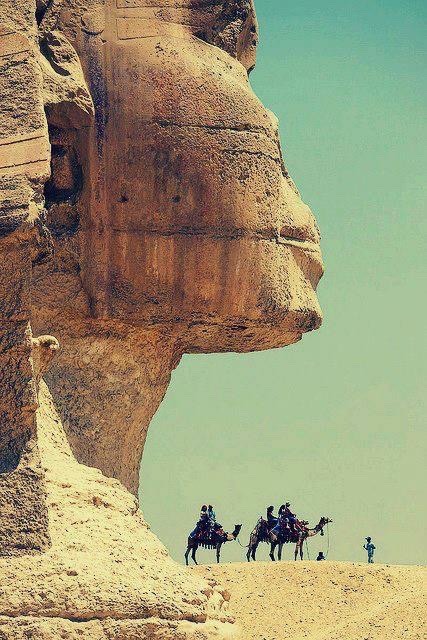
The Great Sphinx
Who Built the Sphinx? The Sphinx Temple Has the Answer by Mark Lehner
Many alternative thinkers claim the Sphinx is much, much older, that it existed thousands of years before Khufu. But our study of the Sphinx and the temple lying just below it—the Sphinx Temple—says no. As certain as we can be about such matters, Khafre created most of the Sphinx. However, Khufu might have started it.
The stone-by-stone map of the Sphinx Temple allowed us to investigate a telltale clue about who built the Sphinx. Quarrymen cut the core blocks (the ones forming the core of the temple walls) so thick—some weigh up to a hundred tons—that many of them include three geological layers. And it was clear that the layers in many blocks were the same as those that run through the bedrock of the Sphinx itself. The blocks had to have come from the U-shaped ditch around the Sphinx. When workers quarried the ditch they left a large block of limestone from which the Sphinx was carved.
As I moved about the Sphinx Temple during my first year of the mapping project, I was struck by how the geological layers run continuously in many places, from one block to another, as the layers must have run in the bedrock. The gangs of young men who moved these mighty stones did not have much chance of mixing them up from quarry to temple wall. The Sphinx and its temple must have been part of the same quarry-construction sequence. But could I prove this?
The following year I met Tom, who had the expertise needed to geologically “fingerprint” the blocks and trace them back to the quarry. Tom looked at the Giza Plateau less as an archaeological site and more as frozen sea floors, petrified, pancaked, and stacked into the bedrock layers from which the pyramid builders quarried blocks, created tombs, and carved the Sphinx.
These layers formed during the Eocene epoch—some 34 to 56 million years ago, as a great primordial sea retreated northward. Under its ebbing waters, a colossal bank of nummulites, unicellular plankton-like organisms, built up. A sandbar developed on the embankment, and in the more protected waters behind it, a shoal and coral reef grew. As the sea retreated to the north, the area behind the sand bank became a muddy lagoon, inhabited by burrowing bivalves and sea urchins. A regular sequence accumulated, which petrified as soft, yellow, marly layers interspersed with harder beds.
In carving the Sphinx directly from the natural rock, the ancient Egyptian quarrymen cut a cross-section through the principal geological layers of the southeastern slope of the Moqattam Formation. The hard layers of the shoal and reef, for example, make up the lowest layer in the Sphinx and its ditch.
Tom and I began our Sphinx Temple core block study by examining each layer, or bed, of the Sphinx. We gave each bed a number and marked them on photographs and on profiles of the Sphinx. The beds were easy to distinguish as they weathered differentially: harder beds protruded, softer beds receded. Also, the relative abundance of different fossils varied. Members I and II showed the greatest differences: I is a very hard gray reef formation, while the first bed of Member II, 2b, is one of the softest of the yellow marl-clay layers. Members II and III are distinct, but the boundary is not so clear as between I and II. Aigner, following an earlier geologist, set the boundary between Beds 7 and 8.
The massive fine-grained bedrock of Beds 8–9 made for good sculpting, with far more endurance than the soft-hard-soft sequence of Member II. This is why the 4th Dynasty builders reserved Member III for the more exposed head. Details like the eyebrows have survived wind, rain, and sand for 4,500 years.
But from which beds exactly did they cut the core blocks? Would this tell us where they were in fashioning the Sphinx at the time they built the Sphinx Temple? To answer these questions we logged each block. We recorded their lithic qualities and fossil content, and assigned each block to one of seven types, A through G.
Most of the Sphinx Temple core blocks are Type A and consist of three layers: upper and lower hard massive layers separated by the soft, yellow marl layer in the middle, which runs continuously through separate blocks over long stretches of temple wall. These blocks come from beds that correspond to the lower chest of the Sphinx.
Type C blocks come from beds that correspond to the Sphinx’s upper chest, top of the chest, and base of the neck. In the Sphinx Temple these blocks cluster near the front. The quarry workers hewed the blocks from layers that would become the lion’s upper chest and top of the back and then dragged them to the eastern front of the Sphinx Temple. As quarry workers cut deeper, to the middle and lower Sphinx chest level, haulers and builders composed most of the core walls of the temple.
Block types B and D did not come from the Sphinx ditch. They most closely match strata to the southwest, exposed in the quarry cut for the Khentkawes Monument. They are less frequent and more intermittent in the temple walls than the A and C blocks. This could indicate that the builders stockpiled these blocks and brought them into the walls whenever there was a hiatus in the quarrying, dragging, and placing of the A blocks from the Sphinx ditch.
Khafre’s workers started shaping the Sphinx as they built his valley temple. And they were probably still shaping the lower lion body, cutting it out of its surrounding ditch, as they made the Sphinx Temple, Khafre’s last major addition to his pyramid complex. But they did not finish. They left the Sphinx Temple incomplete, without its exterior granite casing.
#ancient egypt#kemet#kemetic#egypt#pharaonic#Great Sphinx of Giza#seven wonders of the ancient world#Khufu#Khafre
118 notes
·
View notes
Text


I have made a POKEMON for a project with @napnapcakes :3
Spirell (Spiral, Spell, Shell)
The Spiral Shell Pokemon
Rock/Fairy Type
Ability:
Benthic: Powers up Water-type moves.
Height: 3'07" / 1.1 m
Weight: 225.7 lbs / 497.6 kg
It's a fossil Pokemon based loosely on Nummulites, a foraminiferan. They were roughly coin sized (give or take) and lens-shaped, and fossilized in a metric fuckton of southwest Asia/the Mediterranean's limestone. The inside of these fossils has beautiful, rope-like spiral shapes.
I'm pretty sure the spiral shape didn't show on the outside for Nummulites, but it was what drew me to them, so I took creative liberties with it to make Spirell more interesting-looking. And I also gave it a weird little glassy-eyed spiral-pupiled face.
#pokemon#fakemon#fanmon#my art#digital art#artists on tumblr#im not proud of the shading but i AM proud of the glitter effect#spirell#fairy type#rock type#fossil pokemon#fossil fakemon
22 notes
·
View notes
Text

An Egyptian Nummulitic Limestone Figure of an Amarna Princess, New Kingdom, 18TH Dynasty, Reign of Akhenaten, Circa 1347-1345 B.C
1 note
·
View note
Text
Annals of Improbable Research, i premiati dell'IgNobel per il 2023

IgNobel 2023, i vincitori dei premi più pazzi della scienza tra geologi che leccano le pietre e sessualità delle acciughe. E ancora, wc superintelligenti, persone che parlano al contrario, ragni morti robotici… Siamo arrivati alla trentatreesima edizione. Non possono vantare la storia e il pregio dei Nobel, ma di sicuro anche loro, gli IgNobel sono destinati a una certa popolarità. Il motto rimane sempre quello: la scienza che prima fa ridere e poi pensare. Bizzarro è tutto quello che ruota intorno ai popolari premi che precedono di qualche giorno i Nobel. Per dire, quest’anno, durante la cerimonia ci sono state interessanti lecture da parte di esperti e ricercatori della durata di 24 secondi e di 7 parole. Ma a tener banco durante la cerimonia dell’Annals of Improbable Research ideata da Marc Abrahams e sono stati, soprattutto, loro, i premi. E qual è la migliore ricerca improbabile premiata nel 2023? Ve la mostriamo di seguito (spoiler, quest’anno, purtroppo, l’Italia torna a casa a mani vuote a differenza delle precedenti edizioni). Geologia gourmet Jan Zalasiewicz arriva dalla University of Leicester, nel Regno Unito, e si incassa il premio per Polonia e Regno Unito per aver spiegato sapientemente “perché ai geologi piace leccare le rocce”. Raccontava infatti egli stesso nel 2017 in un articolo dal titolo abbastanza eloquente (Eating fossils) come leccare le rocce - ma all’occasione anche bruciarle, bollirle - fosse una parte, forse un po’ datata e non esente da rischi, di un vecchio modo di fare ricerca, uno strumento analitico scrive. Zalasiewicz ricorda come leccare una roccia consenta subito di vedere in maniera più chiara di cosa è fatta, mettendone in luce le caratteristiche, magari anche assaporandola. Lo ha fatto egli stesso, ricorda, arrivando alla scoperta di uno splendido nummulite (un protozoo fossile). Ma lo hanno fatto anche i grandi del passato, come Giovanni Arduino, il padre della stratigrafia, e, a quanto pare, anche degustatore di rocce. Letteratura, vince l’arte della ripetizione Premio internazionale per la letteratura, con Chris Moulin, Nicole Bell, Merita Turunen, Arina Baharin, e Akira O’Connor che se lo aggiudicano con la seguente motivazione: “per lo studio delle sensazioni che le persone provano quando ripetono una sola parola molte, molte, molte, molte, molte, molte, molte volte”. Questo team franco-malesiano-britannico-finlandese ha infatti studiato le sensazione di alcuni partecipanti chiamati a scrivere e riscrivere determinate parole, fino al punto da trovarle strane, come mai viste o sentite (in un fenomeno chiamato, in contrapposizione al déjà vu, come jamais vu, a indicare la sensazione di estraneità di qualcosa di noto però). Un fenomeno che si ottiene, pare, dopo aver scritto la stessa parola trenta volte o per un minuto e che stimola riflessioni su ortografia e significati. E che è più frequente in chi sperimenta anche il suo opposto. Ingegneria ai ragni robot, morti Si premia la necrobiotica, sì avete capito bene: come suggerisce il nome è una branca della robotica (se così potremmo dire) che utilizza parti morti di animali. In questo caso ragni: il team di Te Faye Yap, Zhen Liu, Anoop Rajappan, Trevor Shimokusu, e Daniel Preston, che arriva da India, Cina, Malesia, e Usa, si è aggiudicato il premio per aver “rianimato ragni morti come strumenti meccanici da presa”. D’altronde, spiegano, senza creare ex novo, si può sfruttare quanto presente in natura: e così, un ragno morto, con il suo fantastico sistema di locomozione, può anche diventare un abile strumento da presa, capace di acciuffare oggetti delicati e dalle strane geometrie, spiegano i ricercatori nelle presentazioni ufficiali. Super-smart toilet per la salute pubblica Un unico vincitore in questa categoria è il sudcoreano Seung-min Park della Stanford University School of Medicine, premiato per lavorare da anni alla messa a punto di un wc da far impallidire i famosissimi wc tecnologi giapponesi. Cita la motivazione ufficiale: “per aver ideato la toilet di Stanford, un dispositivo che utilizza una gran varietà di tecnologie – tra cui una striscia reattiva per l’analisi delle urine, un sistema di visione artificiale per l’analisi della defecazione, un sensore per l’impronta anale abbinato a una telecamera di identificazione e un sistema di telecomunicazioni – per monitorare e analizzare rapidamente le sostanze che espellono gli esseri umani”. Park è convinto infatti che i wc digitali siano uno strumento preziosissimo per l’analisi della salute delle persone a distanza, che potrebbe essere utile persino nelle sperimentazioni cliniche. E, ovviamente, promette, anche per l’identificazione di eventuali malattie. Premio di comunicazione per chi parla al contrario Ci sono persone capaci di parlare al contrario, leggendo le parole dalla coda alla testa. Sono casi senza dubbio particolari, e possono diventare oggetto di studio. Lo sono stati: il team premiato nella sezione comunicazione degli IgNobel ha infatti studiato le caratteristiche neurocognitive di due persone capaci di pronunciare le parole leggendo i fonemi al contrario. E qualche differenza, raccontano, è stata trovata in alcune regioni cerebrali, sia per quanto riguarda una maggiore connettività che materia grigia. I premiati sono María José Torres-Prioris, Diana López-Barroso, Estela Càmara, Sol Fittipaldi, Lucas Sedeño, Agustín Ibáñez, Marcelo Berthier, e Adolfo García e arrivano da Argentina, Colombia, Spagna, Usa, Cina e Cile. La medicina ai peli del naso Il bello degli IgNobel è che permettono di rispondere a domande che non ci saremmo forse mai fatti. Per dirne una, il numero dei peli del naso nelle narici è lo stesso? Christine Pham, Bobak Hedayati, Kiana Hashemi, Ella Csuka, Tiana Mamaghani, Margit Juhasz, Jamie Wikenheiser, e Natasha Mesinkovska sono stati premiati proprio per aver risposto a questa annosa questione, conducendo un’analisi sui cadaveri. A quanto pare sì, o meglio quasi: in media ce ne sono 120 a sinistra e 122 a destra. Lo studio però serviva soprattutto a ottenere informazioni utili per i pazienti con alopecia areata, che riportano più allergie e infezioni respiratorie associate alla perdita di peli nel naso. Il premio va a , Canada, Macedonia, Iran e Vietnam. Nutrizione “elettrica” Non fate mai quello che Homei Miyashita e Hiromi Nakamura proponevano ormai diversi anni fa. Il lavoro ripescato per la sezione nutrizione quest’anno agli IgNobel arriva direttamente dal 2011 ed esplora il mondo del gusto aumentato grazie all’elettricità. La motivazione ufficiale per il premio al Giappone cita: “per esperimenti per determinare come le bacchette e le cannucce elettrificate possono cambiare il gusto del cibo”. I ricercatori infatti spiegavano come fosse possibile utilizzare il gusto elettrico e dei sensori per aumentare l’esperienza del gusto, percependo qualcosa che sarebbe impossibile forse percepire (e magari meglio così). Premio per l’educazione alla noia A scuola può capitare anche di annoiarsi. Ma lungi dall’essere un’emozione da accantonare, anche la noia va studiata. Lo hanno fatto Katy Tam, Cyanea Poon, Victoria Hui, Wijnand van Tilburg, Christy Wong, Vivian Kwong, Gigi Yuen, e Christian Chan, che sono stati premiati proprio per questo. I ricercatori hanno scoperto che anche solo aspettarsi che una lezione sarà noiosa la renderà noiosa, ma anche che se gli studenti vedono i loro insegnanti annoiati o li percepiscono come tali saranno meno motivati. Insegnanti, è il vostro momento, fate tesoro di questo IgNobel. Dividono il premio Canada, Cina, Regno Unito, Paesi Bassi, Irlanda, Usa e Giappone. Psicologia, le dinamiche dello sguardo verso l’alto Va agli Usa e arriva niente meno che dalla fine degli anni Sessanta il lavoro che si aggiudica il premio per la psicologia. La motivazione cita: “per esperimenti su una strada cittadina per vedere quanti passanti si fermano a guardare verso l'alto quando vedono degli estranei che guardano in alto”. Quanti più lo fanno, scrivevano, tanti più si fermeranno e lo faranno. Premio a Stanley Milgram, Leonard Bickman, e Lawrence Berkowitz. Fisica, quelle strane relazioni tra correnti e sesso delle acciughe
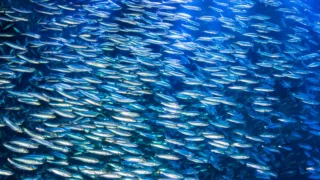
Ciliegina sulla torta, il premio della fisica va a un folto gruppo di ricercatori per “per aver misurato quanto la miscelazione dell'acqua dell'oceano è influenzata dall’attività sessuale delle acciughe”. Radunandosi in massa durante la stagione riproduttiva, scrivevano gli autori, possono infatti generare delle turbolenze, innescando la miscelazione delle acque, potenzialmente influenzando anche la crescita del fitoplancton. Premiati Bieito Fernández Castro, Marian Peña, Enrique Nogueira, Miguel Gilcoto, Esperanza Broullón, Antonio Comesaña, Damien Bouffard, Alberto C. Naveira Garabato, e Beatriz Mouriño-Carballido, provenienti da Spagna, Galizia, Francia, Svizzera e Regno Unito. Read the full article
#acciughe#annalsofimprobableresearch#antiNobel#ignobel#necrobiotica#ortografia#pelidelnaso#ragnirobot
0 notes
Text
It could very much be! Makes sense with the geological history of the area I was in!
I found this sample absolutely by chance, I was looking for basalts in a riverbank when I came across it and it was a pleasant surprise. For a broad context on the area, I found it not too far away from the Bolca lagerstätte, so we're talking of Tethys deposits.


I took some closeups, could they be Nummulites?

Today I went looking for rocks and I was not disappointed
#thank you so much for answering!#I really admire people with such a strong passion for paleontology#it's not my geological cup of tea (I lean more toward geomorphology) but I always love to hear about it
8 notes
·
View notes
Photo








J’ai passé quelques jours chez Christine à Pau.
La très jolie petite ville de Salies-de-Béarn. Le Musée du Sel;
- Nummulites
- cristal de calcite
- pince et céphalothorax d’un crabe de l’éocène (je crois), Xanthopsis dufourii, fossile des Landes
- cristal de gypse
- Nipadites, noix de coco fossile (éocène ? oligocène ?) trouvé près de Pau.
- le reste montre comment les gens de la ville traitaient le sel : ils allaient à certaines périodes récupérer le plus d’eau possible à la source d’eau salée au centre de la bourgade. Ils gardaient cette eau dans des puits privés. On faisait ensuite bouillir cette eau, on récupérait ce qui flottait avec des râteaux, on le disposait sur des draps au dessus de la cheminée où ça s’évaporait. En gros !
#salies#salies-de-béarn#béarn#sel#musée du sel#fossile#êre tertiaire#éocène#oligocène#nummulite#calcite#cristal#cristaux#gypse#crabe#gan#landes#xanthopsis#noix de coco#nipadites#salant
2 notes
·
View notes
Photo

With precious beauties like this we really should rename ourselves Amsterdam Prehistoric Watches. There aren't many of these around, and even less with uncracked surface. The only time I would wear a Fossil watch 😋#amsterdamvintagewatches #rolex #vintagerolex #rolexdaydate #18038 #18238 #rolex18238 #stonedial #rolexstonedial #daydatefossil #rolexfossil #fossildial #vintagerolex #jurassicpark #rolexjurassicpark #nummulite #foraminifera (bij Amsterdam Vintage Watches) https://www.instagram.com/p/CfI-vYUtqtW/?igshid=NGJjMDIxMWI=
#amsterdamvintagewatches#rolex#vintagerolex#rolexdaydate#18038#18238#rolex18238#stonedial#rolexstonedial#daydatefossil#rolexfossil#fossildial#jurassicpark#rolexjurassicpark#nummulite#foraminifera
6 notes
·
View notes
Text
All my ammonites plus a Lopha and a Belemnite. As a kid I was told they were related, as in "The Belemnite curved into the Lopha which curved into the ammonite." Don't think that is true, especially considering Lopha is a bivalve fossil. Also a nummulite, which, to this day, I don't really understand them as the organism they were lol.

#the two big ones are palm sized#ammonite#paleontology#paleobiology#fossils#belemnite#lopha sp.#hobby#collection#metalifer ammonites#hematite ammonites#nummulite#sectioned ammonite
41 notes
·
View notes
Photo

Large Fossil Nummulites Oligocene France Menton Foraminifera Genuine Specimen
Large Fossil Foraminifera (Nummulites sp)
Geological Period: Oligocene Epoch
Age: Approximately 33.9 to 23 million years ago
Formation/Locality: Menton, Alpes-Maritimes, France
This is a well-preserved large fossil of Nummulites sp, a genus of foraminifera — single-celled marine protozoans with complex shells (tests). Unlike most foraminifera, which are microscopic, Nummulites are famously macroforaminifera, with some specimens reaching several centimetres in diameter.
This example comes from the renowned Oligocene deposits near Menton, in the Alpes-Maritimes region of southeastern France, where Nummulites fossils are found in abundance within shallow marine limestones. These organisms thrived in warm, tropical seas, and their dense accumulations once formed entire banks of limestone — famously used by the ancient Egyptians in the construction of pyramids.
Nummulites are instantly recognisable by their coin-like, lenticular shape, with a spiral internal structure. Their abundance and size make them excellent biostratigraphic markers for dating Tertiary sedimentary rocks.
Actual Specimen Pictured: You will receive the exact fossil shown in the listing photo.
Scale Rule: 1cm cube included in the image for full sizing. Please refer to the photo.
Condition: Natural with light preparation; ideal for both educational and display purposes.
Perfect for:
Palaeontology enthusiasts and fossil collectors
Students and educators in Earth sciences
Natural history displays and decor
Gifts for geology lovers
All of our Fossils are 100% Genuine Specimens & come with a Certificate of Authenticity.
Our pieces are carefully selected for their scientific interest, visual appeal, and authenticity.
#fossil Nummulites#fossil foraminifera#Oligocene fossil#France fossil#Menton fossil#Alpes Maritimes fossil#microfossil giant#geological specimen#genuine fossil#large Nummulites#fossil sea creature#Oligocene limestone#scientific fossil#fossil decor#fossil collector item
0 notes
Video
tumblr
So sad this was cut from the English 😭 I assume because it was deemed too scary, but the team have been quite vocal about how they haven’t shied away from the darker themes, so it’s very poopy of Sky if that IS the reason. I guess we can only hope it’ll be on the DVD, but I’m not holding my breath :/
#it reminds me of the alice: madness returns opening but like....with less blood and gore lol#moominvalley#november#snufkin#toft#nummulite
843 notes
·
View notes
Photo






How cool are these fossil coins!
From Niue, and alas silly expensive because they make them in precious metals.
80 notes
·
View notes
Video
instagram
Whole field covered with Nummulites fossils
#nummulite#nummulites#geology#fossil#foram#foraminifera#video#instagram#the earth story#fossilfriday#iran
75 notes
·
View notes